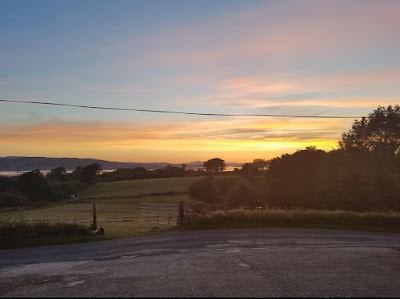Many Names, One Purpose.
I was born and raised catholic, as were my siblings. We made all of our sacraments and attended Catholic School. Once we reached a certain age we were allowed to make our own decisions when it came to religion and our faith. I strayed away from the church as I didn't agree with all of the beliefs. One particular reason I chose not to attend church on a regular basis was because of my mother. My mother was all but divorced from my father. She met another man who raised me from before the I was born. They built a life together. However my mother was viewed as a sinner and felt like an outcast in a place that had once given her comfort. Although she did not attend mass regularly she continued her faith outside of the church. All of these years later my mother has still maintained her faith. Till this day she still prays her Rosary faithfully.
After meeting my husband and more importantly his mother I began attending church again. Not because I was pressured, but because I was ready to give it another try. My husband came from a very religious family, and he was so far away from his home. A part of me had hoped that us attending church would make him feel closer to his family and Ireland. We would later marry in the Catholic Church, baptize our children Catholic and have them attend religion class so they can make all their sacraments. Even with all of this, I still felt disconnected from the Church.
Recently I started saying my Rosary again. In a time of darkness, it has given me comfort. It makes me feel at peace when I'm surrounded by chaos. I think I'm starting to understand why both my Mother and Mother-In-Law prayed it so faithfully.
This past weekend I said my Rosary. Afterwards, I held it in my hand and let it fall from one hand to the other. I didn't even realize I was doing it. It made me think about how important these beads were for Catholics. It made me wonder if other religions had something similar to our Rosary. I spent some time on Google and I was quickly engrossed in articles. I knew many Christian religions prayed the Rosary. The rosaries may be the same, but the prayers said are different. I became fascinated with what I was learning.
While many Christian religions pray the Rosary, non-Christians use prayer beads as well. Depending on the culture the number of beads vary and have special symbolism. The design of the prayer beads may differ by religion, but they all serve a common purpose. They all serve as a sacred tool for counting blessings, affirmations and repetitive prayer.In Christianity, the term Rosary comes from Latin meaning "rose garden". Roses are the symbolic flower of the Virgin Mary. The traditional Christian Rosary consists of 59 beads connected to a crucifix. Three small and two larger beads connect to the pendant and are followed by five decades or segments of 10 beads each with a larger bead between each. Catholics pray The Our Father, Hail Mary and The Glory Be, however prayers recited vary by religion. Rosaries are often made of wood, crystals and semi-precious gemstones. They are often given as a gift for holy sacraments and the deceased are often buried with them.


The prayer beads of all these cultures are beautiful. During my research I was able to see some of these beads of different religions in person. They were all special to their owners, and they were all beautiful. We need to quit feeding into religious stereotypes and look at the person. We really are more alike than we think. As soon as we realize this the world will be a better place.





Comments
Post a Comment